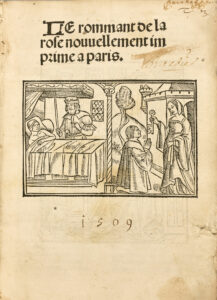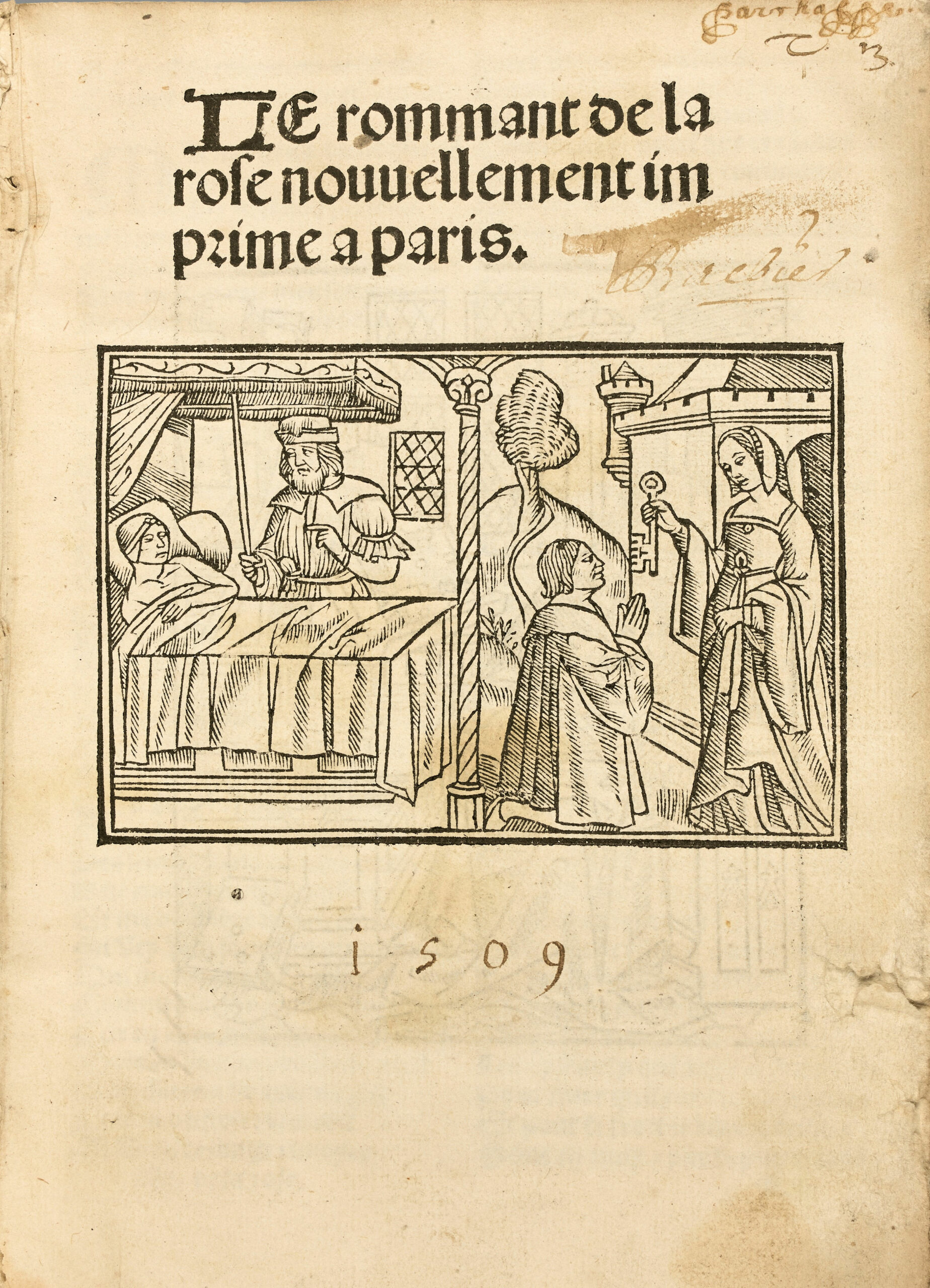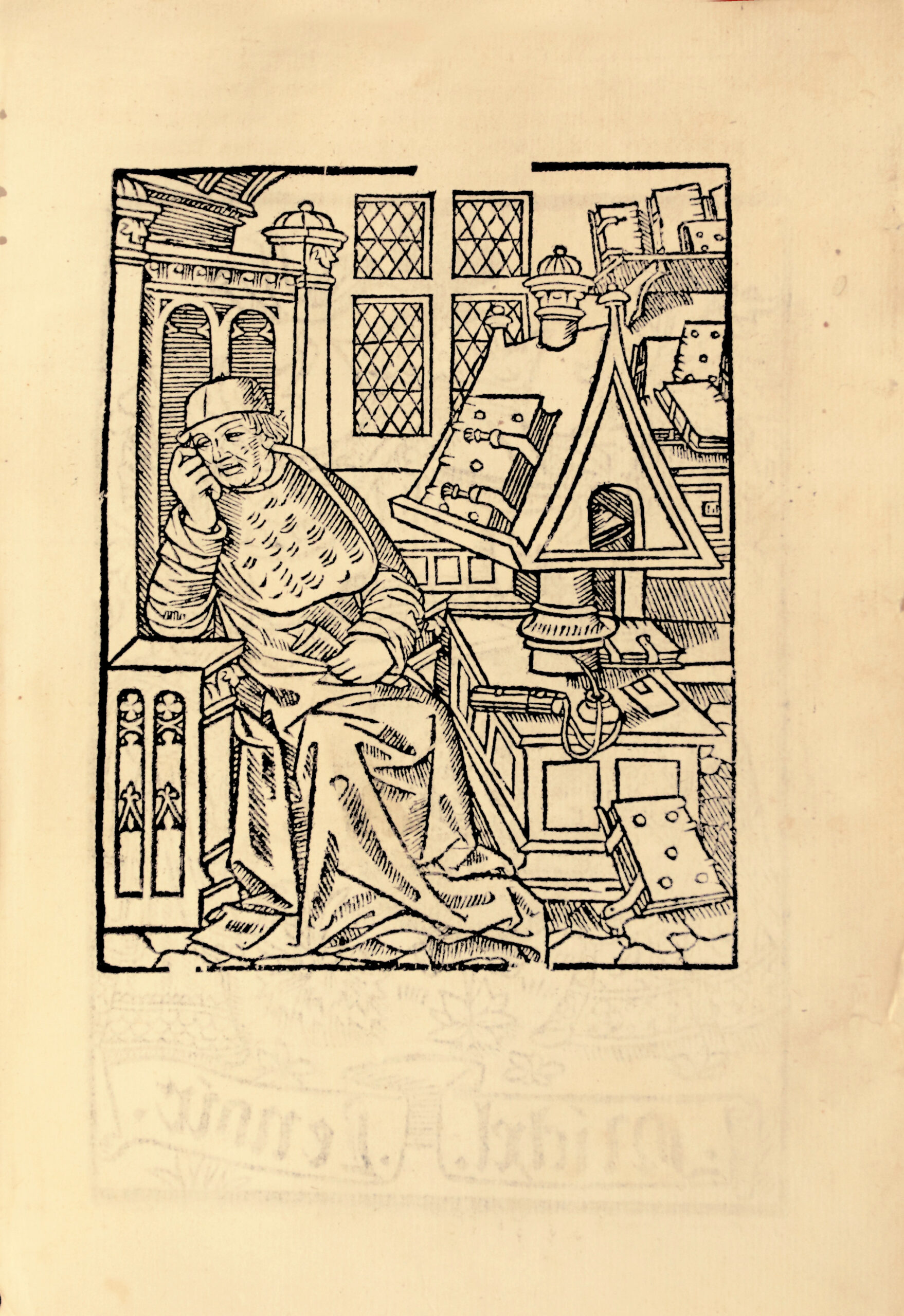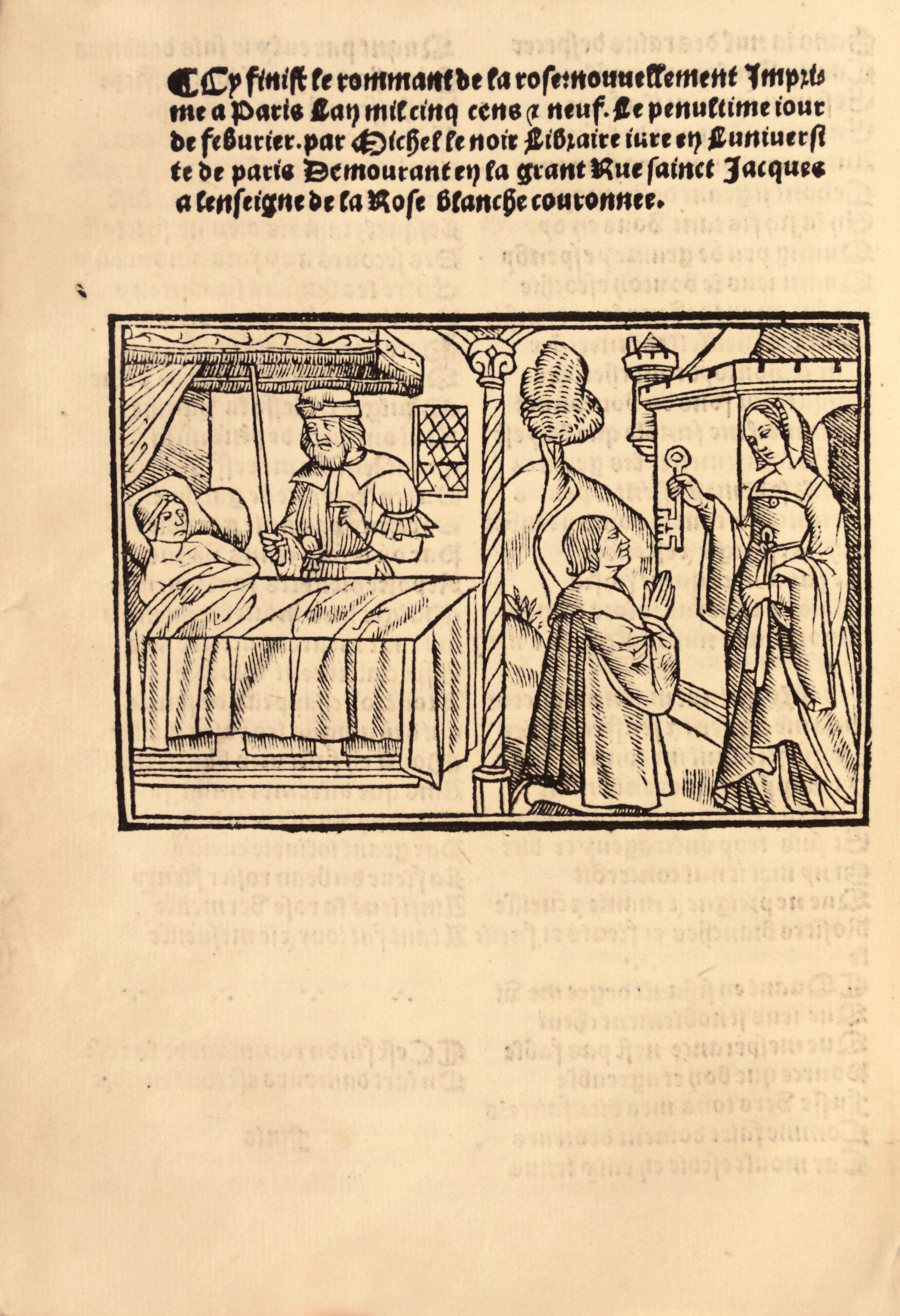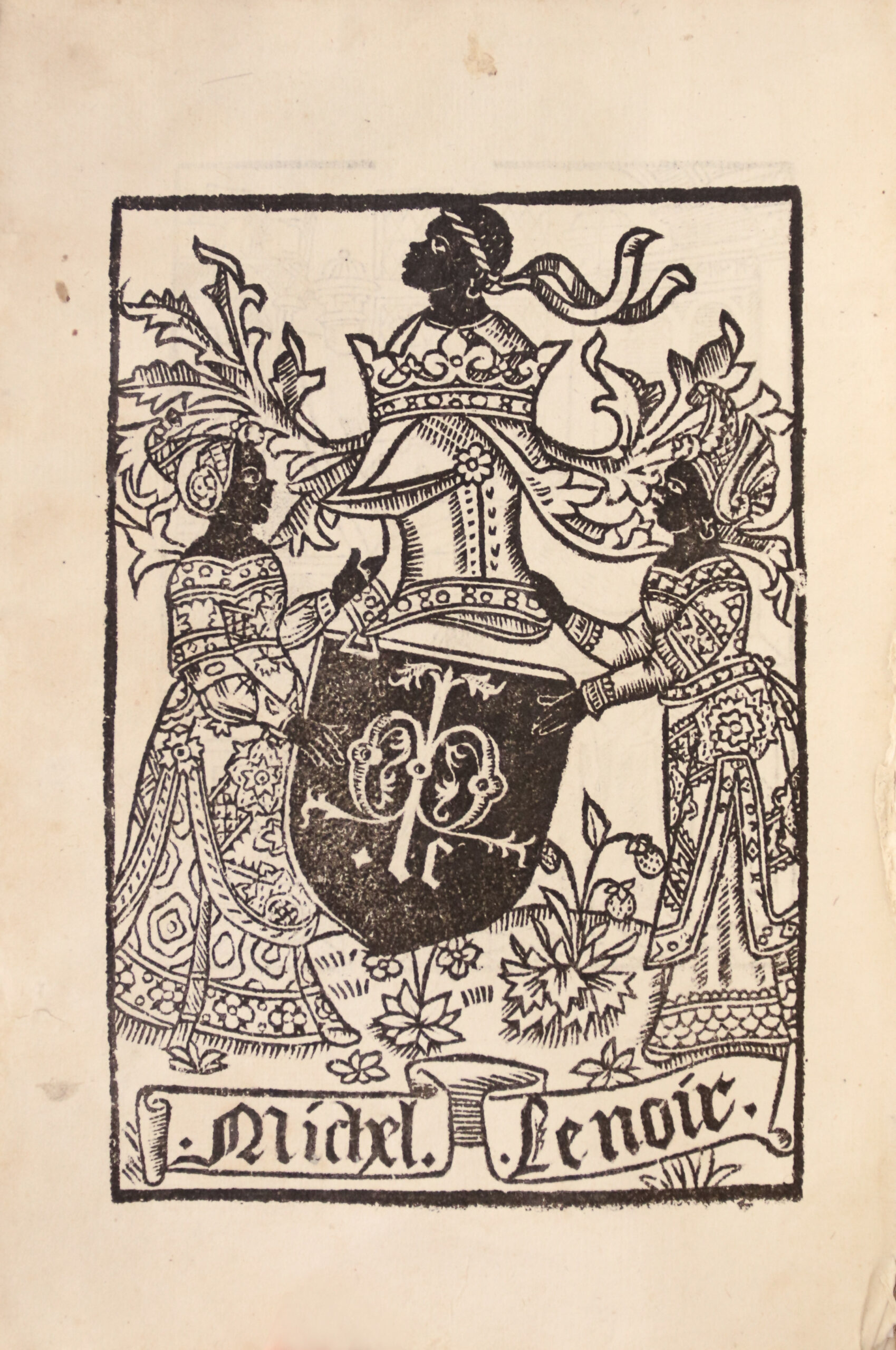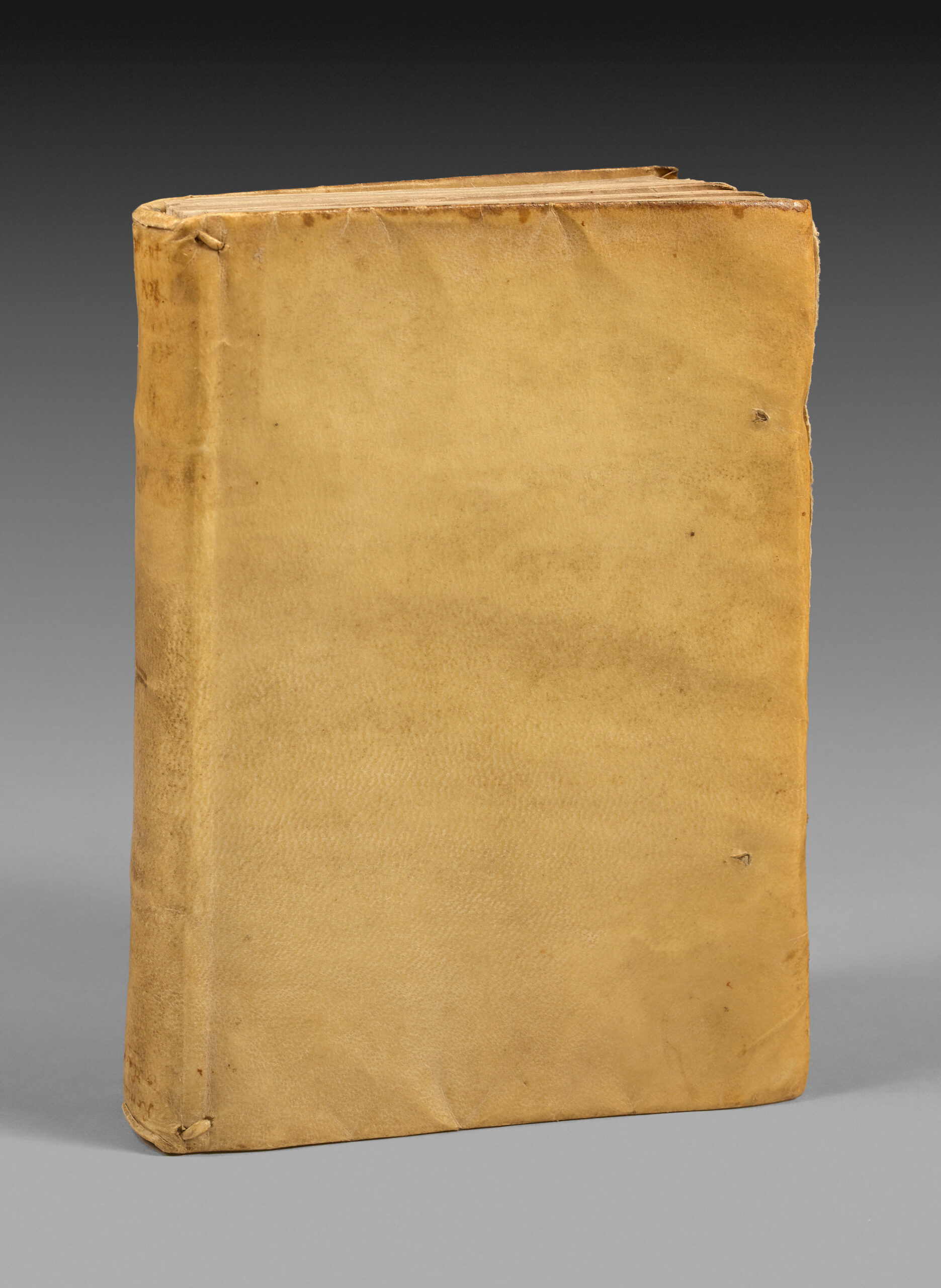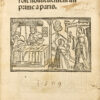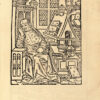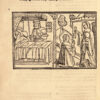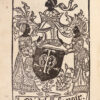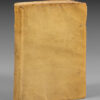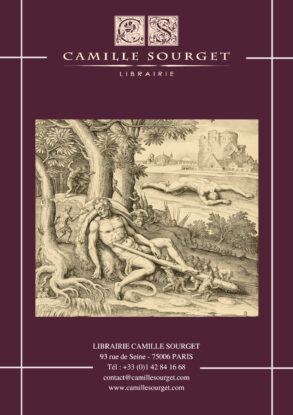A la fin : Cy finist le rommant de la rose : nouuellement imprime a Paris Lan mil cinq cens et neuf. Le penultieme jour de feburier par Michel le Noir libraire iure en Luniuersite de Paris demourant en la grant rue sainct Jacques a lenseigne de la rose blanche couronnee. 1509.
Gothic 4to of (156) ll. including the title, 2 coll. ,39 ll.; 7 figs. of which 1 with two compartments on the title, is repeated on the verso of the penultimate l., under the explicit; another on the verso of the title is repeated on the recto of the last l., the verso of which is occupied by the mark of Le Noir. Very small tear in the margin of the 2nd l. without loss.
Full ivory vellum, flat spine, remains of ties. Old binding.
185 x 127 mm.
First edition of the 16th century of the “Rommant de la rose” printed in 1509 in Paris by Michel Le Noir, it is illustrated with 7 woodcuts, of which one with two compartments is repeated on the verso of the penultimate leaf. It will be reprinted like this in 1515 and 1519.
It is preceded by 8 incunabula editions, 7 folios and one 4to, all of which are extremely rare. The eighth, 4to, is given for 1499-1500 by Bourdillon, the first is from 1481. To underline the rarity of the first editions of the Roman de la Rose is easy: 5 known copies of the first, 6 known copies of the second; 2 cited copies of the third; no cited copy of the fourth of 1494, etc… Only one cited copy of the present edition of 1509 by Bourdillon “The early editions of the Roman de la Rose”.
« Printed in double columns, 39 lines to a full column, and containing 156 unnumbered leaves, the first having on the recto the title, as above, over a double woodcut, on the verso the cut of a Personage meditating. The text ends on the recto of the penultimate leaf, on the verso of which is the achevé d’imprimer, as above, over the same double woodcut. On the recto of the last leaf is the same cut of a Personage meditating, and on the verso the device of Michel Le Noir. The gatherings are of six leaves or four, very irregularly. There are 29 signatures, A—X, a. a.—h. h., in sixes, except D, G, L, P, S, X, d. d., f. f., g. g., fours. The first signature is A ii, the last h. h. iii. K is composed of Lz ; n is sometimes used for the numeral ii ; q.ii is put for Q.ii. On every page that bears a signature the footline Ro. de la rofe is printed below the first column. The Initials to Paragraphs are large capitals. There is only a single woodcut in the text, a small extraneous cut (from Mathéolus) to the Verse-title § 35, on fol. F.i.
A copy of this edition now in the Public Library at Sydney, N.S.W. »
The title in 3 lines, and adorned with an attractive woodcut with two compartments, (100 x 70 mm).
The verso of the title is occupied by a large woodcut (109 x 85 mm) depicting a writer in front of his desk, his face resting on his hand. This engraving often appears in Le Noir’s printings and also belongs to the iconography of the Trepperels.
The six lines reminding us that the rest of the poem is the work of Jean de Meung are printed on the front of leaf F.
The poem ends with the wonderful couplet “C’est fin du rommant de la rose ou l’art damours est tout enclose” followed by three woodcuts including the mark of Michel Le Noir (134 x 93 mm).
This text remains the only one of the great literary works of the French Middle Ages whose memory was perpetuated until the full Renaissance.
Joining the first poetic and allusive part of 4,058 verses by Guillaume de Lorris to the more eloquent and erudite part of 17,722 lines by Jehan de Meung, the work fits in well with the tradition of the “arts of love“, which emerged around 1150, betraying an awareness “in a learned environment” of the courtly fact. Assuring the triumph of allegory, this novel also reveals the taste for a scholarly and refined language.
The text here offers a number of variants with the incunabula editions. In particular, the name of Jean de Meung is inserted at the beginning of the second part instead of the author’s real name (Clopinel), which appeared at this point in the incunabula editions.
It is on leaf O4 that the passage “cy reposera Guillaume…” appears, followed by the indication that Jean Clopinel “will continue this poem forty years after Guillaume has ceased”.
The first editions of the Roman de la Rose preserved in their old binding are of the utmost rarity.
A very fine copy preserved in its antique ivory vellum.
